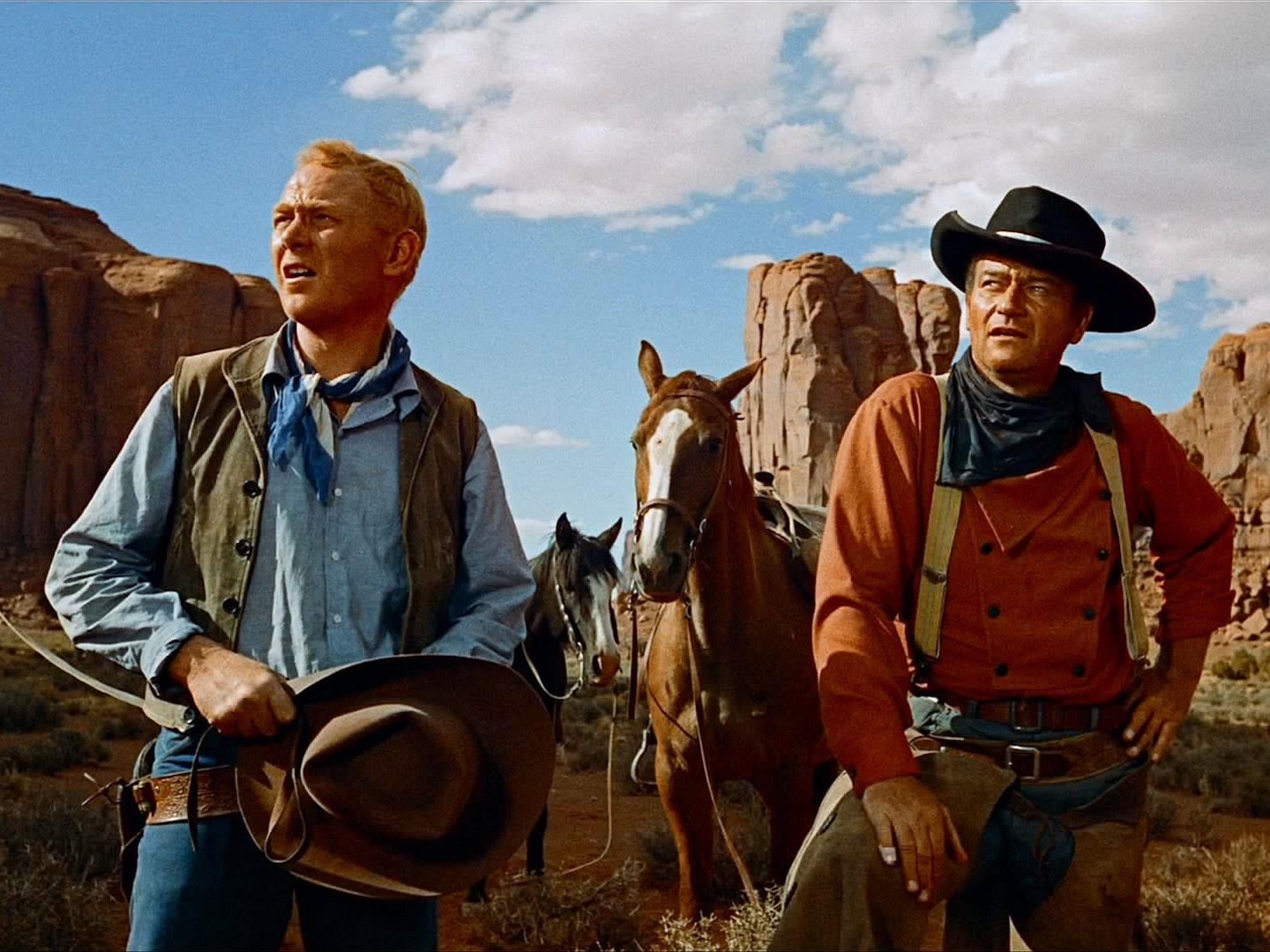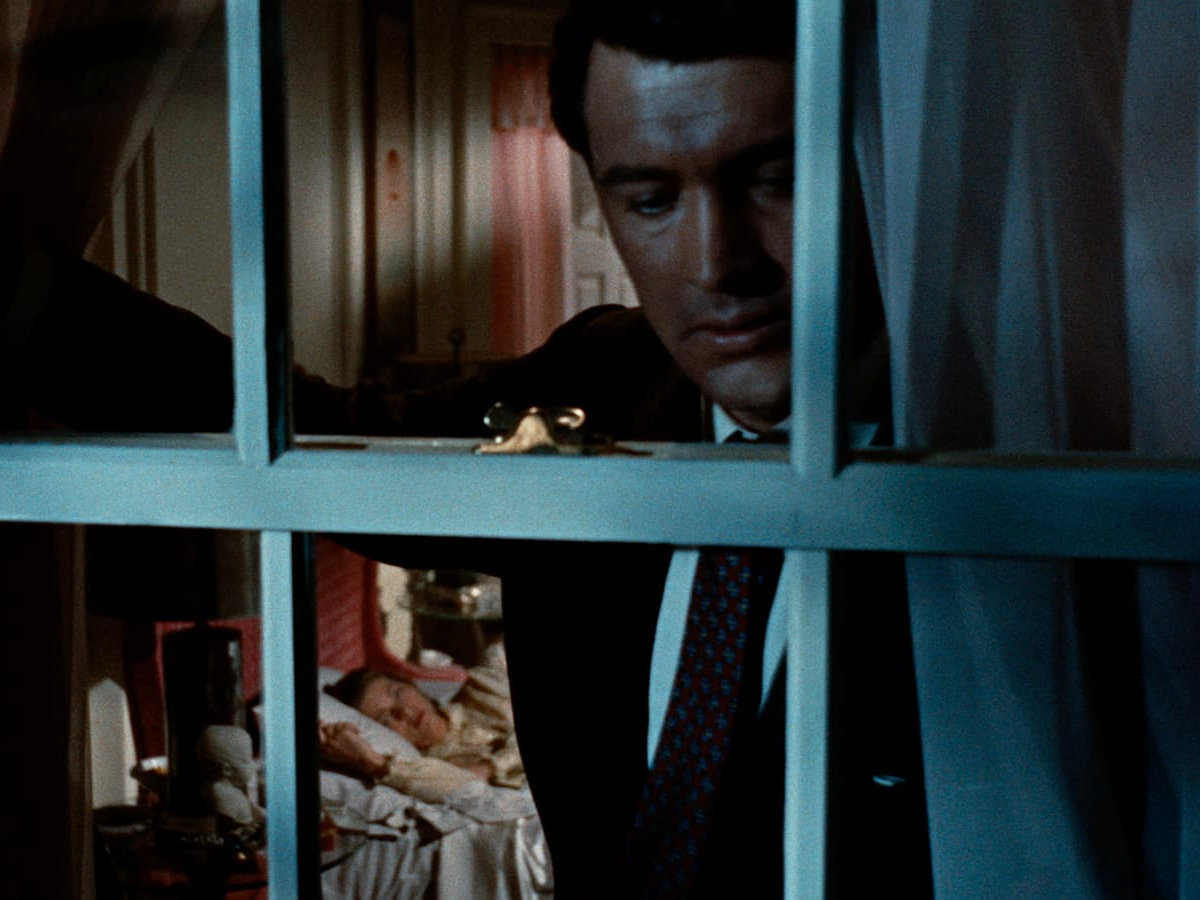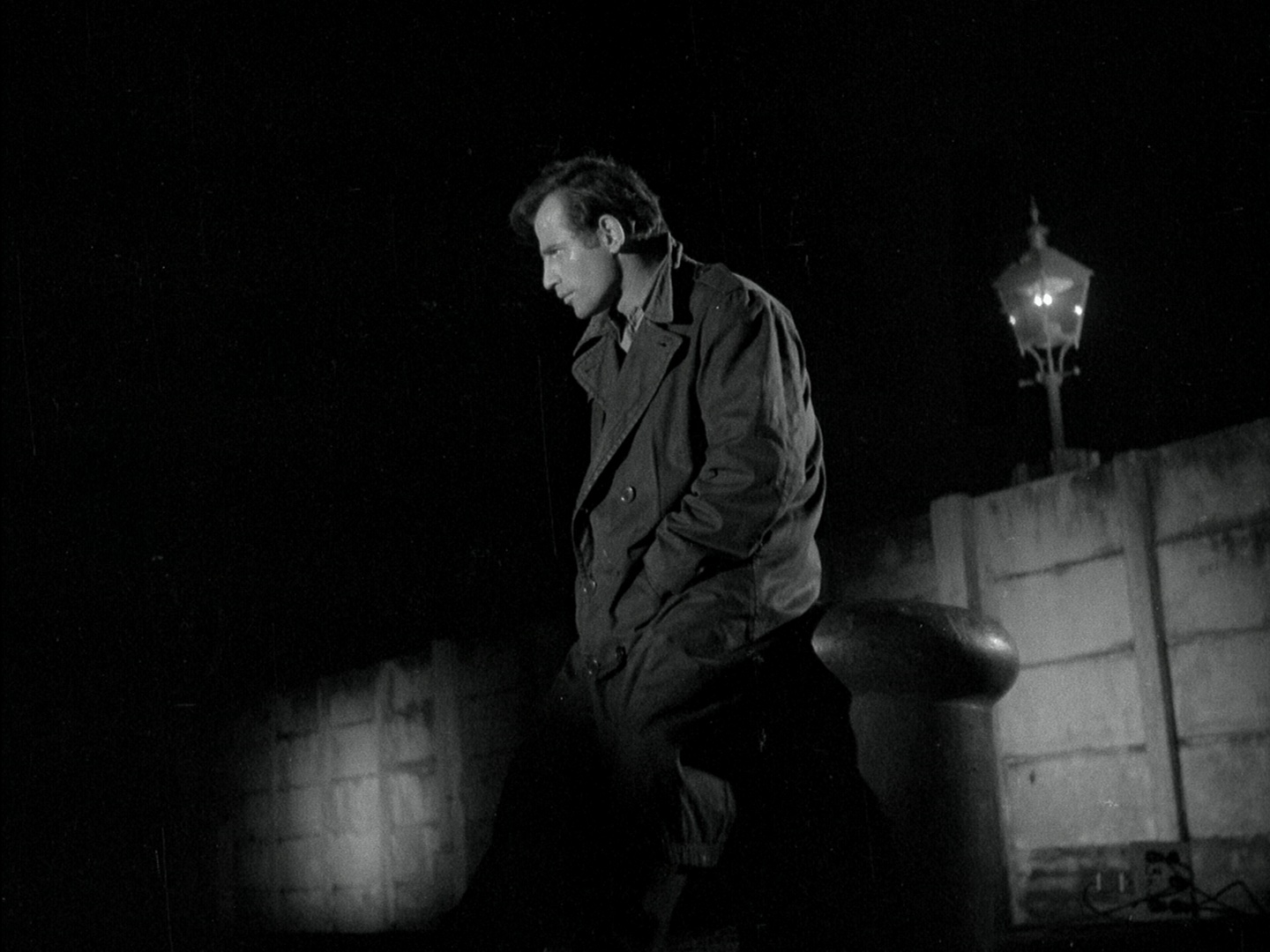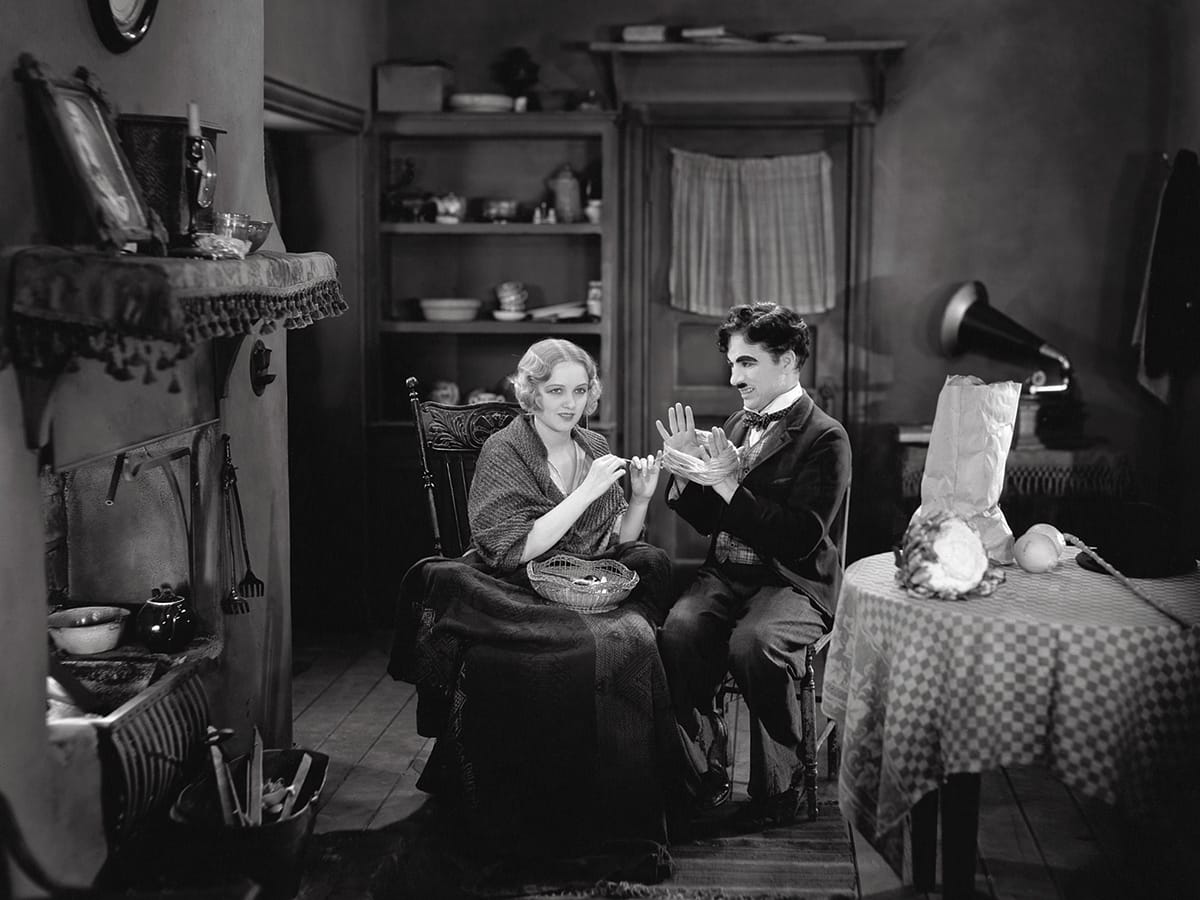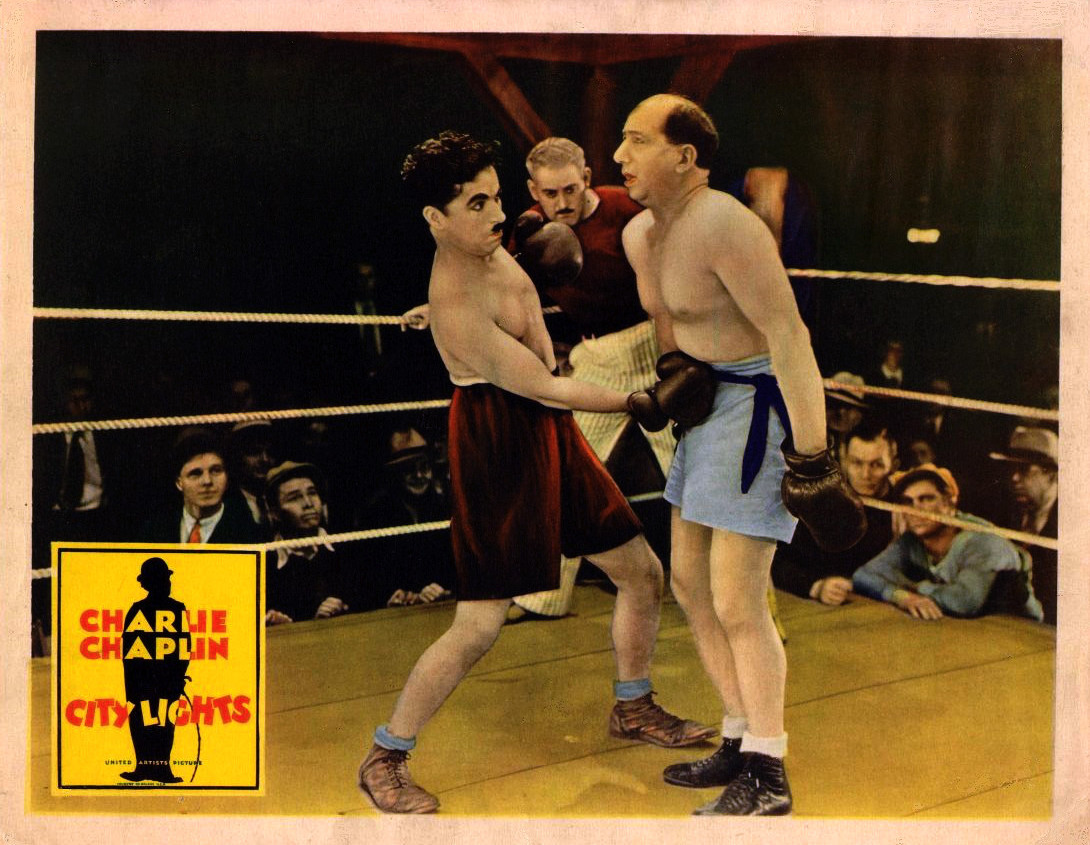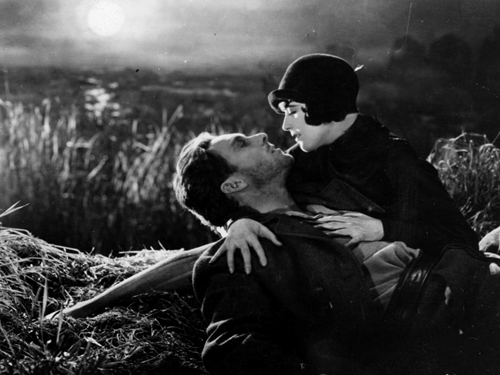EN
This song of the Man and his Wife is of no place and every place; you might hear it anywhere, at any time.
Opening title card
“One would hesitate to call any film the finest of its era, though as a climax to the silent film, one could certainly defend the statement if it were applied to Sunrise.”
William K. Everson
“Murnau’s cinema, is so much ... about mediated desire, desire of an image for an image: the open secret of film-making itself, intensely eroticising the very act of looking, but also every object looked at by a camera.”
Thomas Elsaesser
“[Sunrise], generally agreed to be a summation, a point of perfection in the silent cinema and in Murnau’s achievement ... but the conquest of narrative (novelistic) fluidity is achieved at the expense of abandoning the attainments specific to the silent period. [...] All Murnau’s films should be read primarily as voyages into the imaginary. Each time a point of transit is featured in the story, denoting the symbolic space where the fiction divides into two. The bridge in Nosferatu, the revolving door in The Last Laugh, the blank screen in Tartuffe, the circles of fire in Faust, the lake in Sunrise.
To retrace these journeys, examining their various stages and interconnecting their landmarks, is to consider the cinema in the course which turned it into a classical art – master of its means and its aims – and to consider also what remains seminal for the cinema of the future in the hazardous campaigns of an imagination cut short by death in 1931 and forever bearing a name that also belongs to the imagination: Friedrich Wilhelm Murnau.”
Jean-Andre Fieschi
“People have made too much of ‘depth of focus’ in the work of Gregg Toland with Orson Welles. Like Stroheim in Foolish Wives, Murnau juggles with such effects; the light seems to weave long spaces. When the depths become blurred or imprecise it is intentional and not because of technical inability. Charles Rosher, chief cameraman for Sunrise, told me:
I worked with a wide-focus lens of 35 to 55 mm for the scenes in the big cafe. All the sets had floors that sloped slightly upwards as they receded, and the ceilings had artificial perspectives: the bulbs hanging from them were bigger in the foreground than in the background. We even had dwarfs, men and women, on the terrace. Of course all this produced an amazing sense of depth.
Murnau never tired of varied and multiple backgrounds. When the lovers are sitting in the restaurant with the couples beyond them dancing on the other side of the glass, they toast their happiness with wine. Then suddenly, though they do not turn round, the background starts to spin over their heads like an enormous disc. Then shining mists billow up behind them and grow opaque. The dancers have turned into shapes that fly on invisible trapezes, their silhouettes darting through space, already prefiguring The Four Devils. The lovers, drunk with happiness, feel as light and weightless as the airy acrobats.
Murnau limited himself to an incompletely defined maelstrom of out-of- focus shots. Mayer had suggested in his script:
By a trick-shot the violins in the orchestra seem to have grown blissfully vague.
Shot of the couple:
They are sitting down. Close, in front of the camera. Their eyes blissfully half-closed.
While the whole background grows blissfully gently blurred.
And then!
Are these ladders from heaven descending over it? Yes!
And angels glide down them.
With violins, and more violins.
Hovering over the garden.
Circling round over the couple
Gently playing their violins.
As behind them a meadow
Seems to be superimposed on the background. With flowers nodding in a blissful breeze.
Happy seconds thus.
And more.
Murnau avoided the picture-postcard bands of angels and replaced them with dark, indistinct figures.”
Lotte H. Eisner
FR
« [Sunrise] nous entraîne un degré plus loin au cœur de ce monde intime où les sentiments, amour et haine, joie et tristesse, désir et renoncement, se nourrissent d’eux mêmes et meurent de leur propre excès. Et pourtant, nulle concession aux facilités de l’ellipse et du symbole, une sorte d’harmonie préétablie semble assigner à leurs vicissitudes le rythme des modifications du ciel. A l’ultime détour de notre quête intérieure, nous nous trouvons de nouveau face au monde. Le décor participe au jeu ; s’il ne consent que rarement à s’animer, il n’en règle pas moins toujours de quelque manière les déplacements des personnages. A la tyrannie des limites du « cadre », il substitue ses lois. Ne cédons que prudemment aux séductions du nombre d’or et de la belle image. Quelle photographie égalera jamais la moindre phrase? Mais, en revanche, quel plus beau vers de nos poètes se flatte-t-il d’épuiser la magnificence de ce monde sensible que le cinéma seul a le privilège d’offrir intact à nos yeux? »
Eric Rohmer



